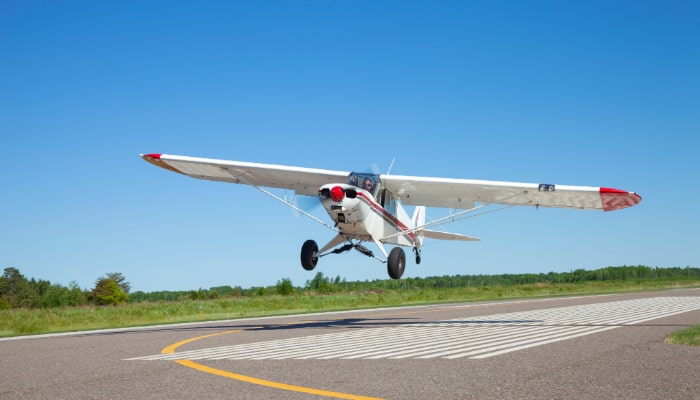
PUNC - Pilots, Use, Named Insured, Contracts
In a pilot’s world, use of acronyms as a type of checklist is commonplace as a backup to the numerous written checklists we utilize (Think GUMP / Gas-Undercarriage-Mixture-Prop). At AssuredPartners Aerospace, we also use an acronym as a risk management tool in insurance, much as it is in the cockpit. We coined the acronym PUNC to call attention to the four most important areas of the aviation insurance policy that result in the largest percentage of claim denials. PUNC / Pilots – Use – Named Insured – Contracts. Get these four correct and you’ve got 85% of your coverage nailed down tight. In this post, we’ll tackle Pilots.
Pilots
Perhaps one of the easiest and most common ways to void all coverage under your aircraft insurance policy is to allow a pilot to fly your aircraft without confirming he/she meets the approved pilot clause of the aviation insurance policy. Contrary to popular belief, insurance companies don’t like to deny claims. It’s bad PR for them and isn’t conducive to retaining their other valued policyholders. However, they also set mutually agreed upon terms in the insurance contract such as the Approved Pilots clause that if not followed, leave them no choice but to deny certain claims.
You need to know exactly who can and cannot fly your aircraft, according to the requirements of the insurance policy. Aviation insurers require higher standards than required by the Federal Aviation Regulations. After all, it is the insurance company who could shell out millions in the event of a loss, so it is in their vested interest to make certain they are comfortable with who is at the controls of your aircraft.
The insurance company will state in the policy exactly who is approved to act as pilot-in-command or second-in-command (if required). Typically, these pilots will be listed by name and/or the policy will include an “open pilot warranty” which stipulates broad credentials and pilot experience that if met, would allow an aircraft owner to use that particular pilot.
Depending on how coverage was structured, many policies have additional requirements listed for the pilots. These are mandatory and must be met to the letter of the law! For example, some policies state: “It is further required that all pilots, whether named or meeting an open pilot warranty, must have successfully completed a motion-based simulator training course specifically designed for the make and model aircraft operated within the preceding twelve (12) months of any and all flights covered by this policy, and annually thereafter”. Some of the items required by a claims adjuster after a loss are proper documentation the pilot(s) flying the aircraft in fact completed the above outlined training as required, that the training took place in the make and model (Citation CJ2 doesn’t equal a Citation CJ3) aircraft being operated and that they have logged the amount of time previously reported to the insurance underwriter.
Insurance companies recognize the need for flexibility when it comes to who is allowed to fly your airplane. For example, if your regular pilot is ill or on vacation, it is helpful to have the ability to utilize another pilot who has already been pre-approved by the insurance company. This is the intent of the “open pilot warranty” found in some policies. The open pilot warranty is not designed to allow you to let other pilots operate the aircraft on a regular basis. Be very careful when relying on this provision of your policy. Some of these requirements can be very tricky to comply with and the insurance adjuster will closely scrutinize the circumstances and credentials of a pilot flying under the open pilot warranty in the event of a claim.
Some aircraft owners mistakenly believe it is okay for a pilot who has not been approved by the insurance company to receive instruction or log time, provided another “insurance-approved” pilot is in the cockpit acting as “PIC.” PIC as defined by the insurance carrier is “sole manipulator of the controls.” Therefore, if the pilot physically handling the controls at the time of a loss is not approved as pilot under the policy, there is no coverage. Insurance underwriters view this practice as an increased hazard requiring their analysis and approval, prior to flight.
Prior to using a pilot other than your regular pilot(s), we strongly recommend having that pilot complete a form verifying their credentials, submit that form to your AssuredPartners Aerospace insurance broker, and have them get the blessing of the insurance carrier. Want to know more? Contact us or visit our website.

Related articles

When it comes to ensuring a smooth collaboration between an aircraft owner and their insurance broker, there are several key actions an owner can take to support their broker in doing the best job on...

Your aircraft has suffered a gear up landing. Your insurance carrier has been notified, and the repair of the aircraft is underway. You don’t have a lien on the aircraft with a bank, so you decide...

Embarking on the journey to become a pilot is an exhilarating experience filled with challenges and triumphs. Flight schools play a crucial role in shaping the skills of aspiring aviators, providing...